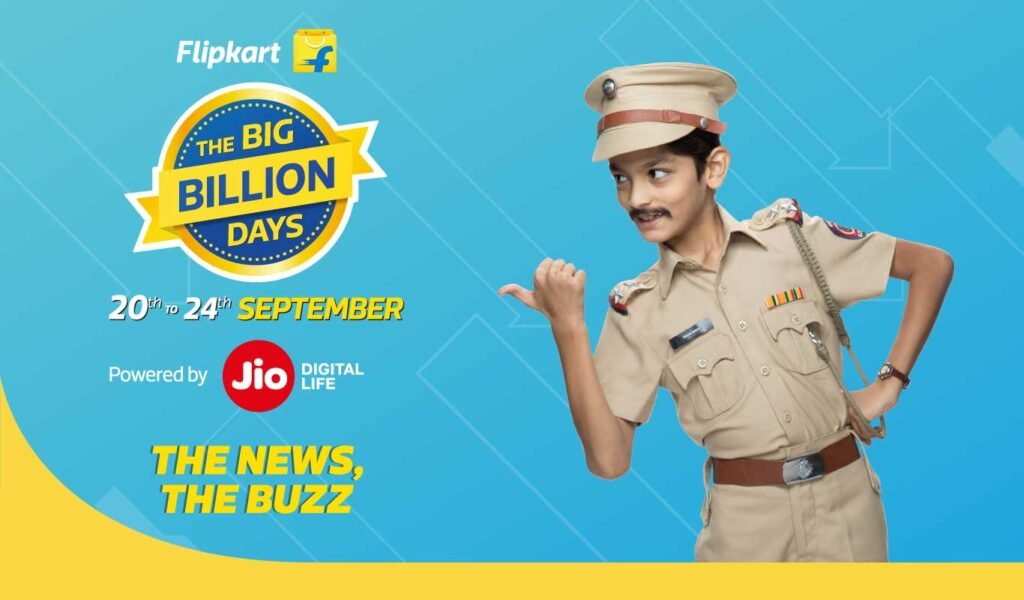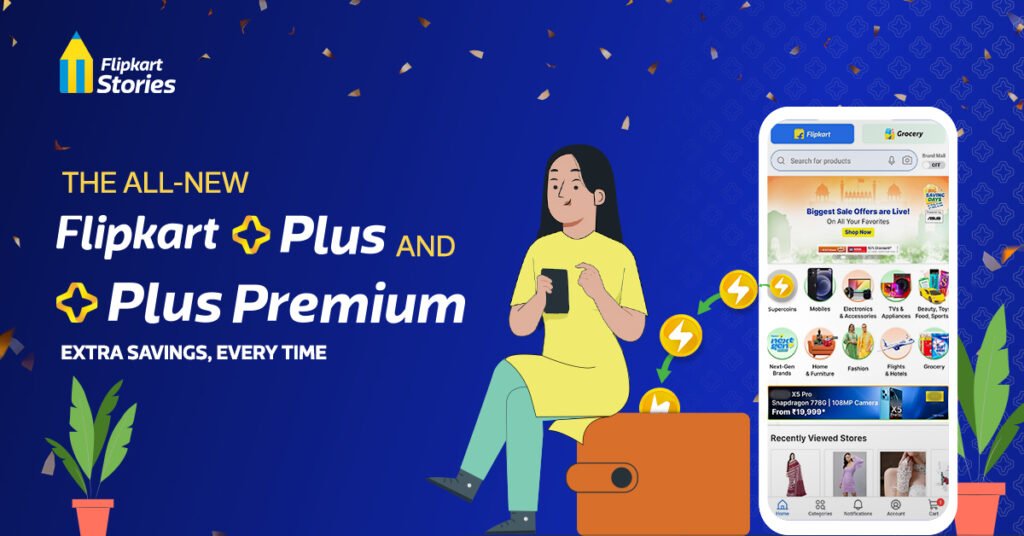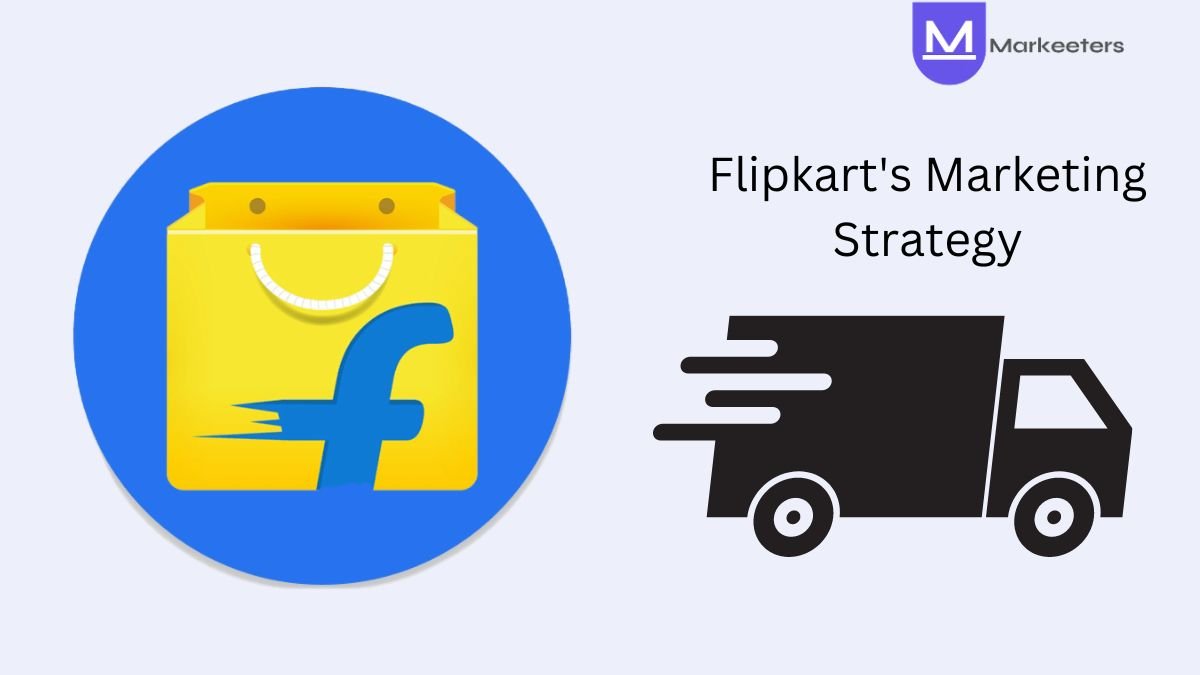Flipkart, the e-commerce giant of India, has carved a niche for itself in the highly competitive online retail market. Since its inception in 2007, the company has adopted a slew of innovative marketing strategies that have propelled its growth and solidified its position as a market leader. From using the power of social media to creating buzz-worthy marketing campaigns, Flipkart’s marketing strategies are a masterclass in effectively reaching and engaging with its target audience.
Whether you’re an aspiring entrepreneur seeking to learn from one of India’s e-commerce giants or a marketing enthusiast eager to gain insights into cutting-edge strategies, this blog post promises to be an insightful and informative read. Get ready to dive into the dynamic world of Flipkart’s marketing prowess and uncover the secrets behind its remarkable success.
Facts About Flipkart
| Founded | 2007 in Bengaluru, India |
| Founders | Sachin Bansal and Binny Bansal |
| Business | E-commerce marketplace |
| Headquarters | Bengaluru, Karnataka, India |
| Products | Electronics, Fashion, Home Appliances, Books, Furniture, and more |
| CEO | Kalyan Krishnamurthy |
Who is Flipkart’s Target Audience?
In the highly competitive world of e-commerce, understanding your target audience is crucial for crafting effective marketing strategies. Flipkart has mastered this art, catering to diverse consumer segments with tailored approaches. By identifying and using insights about its target audience, Flipkart has solidified its position as a market leader, fostering customer loyalty and driving sustainable growth.
Broad Target Audience
Flipkart’s overarching target audience is the rapidly growing Indian middle class, spanning across urban and semi-urban areas. With rising disposable incomes and increasing internet penetration, this demographic represents a vast and lucrative consumer base for the e-commerce platform.
Segmented Approach
While catering to the broader middle-class market, Flipkart has adopted a segmented approach to reach specific consumer groups effectively. Here are some key segments that the company targets:
1. Millennials and Gen Z
This tech-savvy and digitally native cohort is a primary focus for Flipkart. Through dynamic social media campaigns, influencer collaborations, and trendy product offerings, the company has effectively captured the attention and loyalty of these young consumers.
2. Working Professionals
Flipkart’s convenience, wide product range, and competitive pricing resonate with the needs of India’s urban working professionals. Time-saving features like easy returns, express delivery, and seamless online experiences cater to this segment’s busy lifestyles.
3. Value-Conscious Consumers
With its frequent sales, discounts, and budget-friendly product lines, Flipkart has successfully tapped into the value-conscious Indian consumer base. This segment appreciates the platform’s ability to provide quality products at affordable prices.
4. Tier 2 and Tier 3 Cities
Recognizing the growing purchasing power and internet accessibility in smaller cities and towns, Flipkart has expanded its reach beyond metro areas. Targeted marketing campaigns and localized offerings have helped the company penetrate this emerging market.
Flipkart’s Winning Marketing Mix Strategy
1. Product
Flipkart offers a wide range of products across multiple categories, including electronics, fashion, home appliances, books, furniture, and more. The platform continuously expands its product offerings to cater to diverse customer needs and preferences. Additionally, Flipkart has introduced private label brands like MarQ, Smartbuy, and Perfect Homes to offer exclusive and affordable products.
2. Price
Flipkart follows a competitive pricing strategy, offering products at competitive rates to attract value-conscious Indian consumers. The platform frequently runs sales and discount campaigns like the Big Billion Days, providing customers with attractive deals and discounts. Flipkart also offers various payment options, including cash on delivery and easy EMI options, making products more accessible to a broader customer base.
3. Place
Flipkart has a robust logistics and supply chain network called Ekart, which enables efficient delivery across India. The company has strategically established warehouses and fulfillment centers in various locations to ensure timely delivery. Additionally, Flipkart has partnered with local stores and pickup points, allowing customers to conveniently collect their orders from nearby locations.
4. Promotion
Flipkart employs a diverse range of promotional strategies to reach and engage with its target audience:
Digital Marketing
Flipkart heavily relies on digital marketing channels, including social media platforms like Facebook, Instagram, and YouTube, to promote its products and campaigns. Influencer marketing and content marketing are also key components of its digital strategy.
Traditional Advertising
Flipkart uses traditional advertising mediums like television commercials, print ads, and outdoor billboards to create brand awareness and promote major sales events.
Partnerships and Collaborations
Flipkart has formed strategic partnerships with brands, celebrities, and influencers to co-create marketing campaigns and use their reach.
Referral Programs
Flipkart encourages customer referrals through incentives and rewards, fostering word-of-mouth promotion.
5. People
Flipkart places significant emphasis on customer service and support. The company has a dedicated customer care team to address queries and resolve issues promptly. Additionally, Flipkart invests in training and development programs for its employees to ensure efficient order processing, delivery, and overall customer satisfaction.
Flipkart’s Marketing Strategies That Paid Off
1. The Emotional Connect: Humanizing the Brand
Flipkart’s marketing campaigns have masterfully tapped into the emotional core of the Indian consumer. Their “Kidults” campaign, featuring children portraying adults in everyday situations, struck a chord with audiences, injecting humor and relatability into the brand’s narrative. By using the universal appeal of children, Flipkart crafted a campaign that transcended age and demographics, leaving an indelible mark on the minds of viewers.
2. Unleashing the Power of Celebrity Endorsements
In a nation where Bollywood reigns supreme, Flipkart has adeptly harnessed the star power of India’s biggest celebrities. From Ranbir Kapoor and Alia Bhatt to Amitabh Bachchan and Sonakshi Sinha, Flipkart’s campaigns have been graced by the crème de la crème of the entertainment industry. By aligning with these influential personalities, the brand has effortlessly tapped into the psyche of the Indian consumer, fostering trust and establishing itself as a household name.
3. The Big Billion Day Phenomenon
Flipkart’s marketing prowess reaches its zenith during the annual “Big Billion Day” extravaganza. This mega-sale event has become a cultural phenomenon, igniting a frenzy of anticipation and excitement among Indian shoppers. Through meticulously orchestrated marketing blitzkrieg, innovative virtual reality experiences, and gamification elements, Flipkart has transformed the Big Billion Day into a national obsession, cementing its position as the undisputed leader in the e-commerce festive sales arena.

4. Embracing the Digital Revolution
In a mobile-first nation like India, Flipkart has astutely embraced the power of digital marketing. From crafting engaging social media campaigns to optimizing its search engine presence, Flipkart’s digital strategy has been a game-changer. The brand’s pivot towards digital marketing not only reduced its cash burn but also allowed it to connect with tech-savvy consumers seamlessly.
5. Diversifying into New Verticals
Flipkart’s marketing strategy extends beyond its core e-commerce offerings. Through strategic acquisitions and partnerships, the brand has expanded its reach into diverse verticals such as fashion, groceries, and even influencer marketing. The “India’s Next Fashion Influencer” reality show, launched by Flipkart’s subsidiary Myntra, exemplifies the brand’s ability to seamlessly blend online and offline worlds, captivating audiences and driving engagement across multiple platforms.
6. Customer-Centric Approach
Flipkart uses data analytics to understand customer preferences and deliver personalized recommendations and offers. It provides a personalized shopping experience by showcasing products that match customers’ interests and previous purchase history. It focuses on providing excellent customer service with easy return policies, efficient customer support, and multiple payment options.
7. Loyalty Program
Customer loyalty is a precious commodity. Flipkart has ingeniously addressed this through its loyalty program, Flipkart Plus. Launched with the vision of providing unparalleled value to its customers, Flipkart Plus has rapidly become a cornerstone of Flipkart’s marketing strategy. This loyalty program offers benefits like free shipping, early access to sales, and reward points on every purchase, encouraging repeat purchases. It is a strategic initiative that sets Flipkart apart from its competitors.

Conclusion
In the crowded and competitive arena of Indian e-commerce, Flipkart’s marketing strategies have proven to be a cut above the rest. By striking a perfect balance between emotional resonance, celebrity magnetism, and digital savviness, Flipkart has carved a niche for itself as the go-to destination for Indian shoppers. As the brand continues to evolve and innovate, its marketing playbook will undoubtedly inspire and shape the industry for years to come.
What role do influencers play in Flipkart’s marketing efforts?
Flipkart has recognized the power of influencer marketing and collaborates with popular social media personalities, celebrities, and industry experts. These influencers help promote Flipkart’s products and campaigns to their large follower bases, increasing brand visibility and credibility.
What innovative marketing campaigns has Flipkart launched?
Flipkart has launched several innovative marketing campaigns to stand out in the competitive e-commerce landscape. Examples include the “Kids Replica” campaign, where children recreated iconic movie scenes to promote Flipkart’s kids’ product range, and the “Flipkart Furniture Store” campaign, which used augmented reality to allow customers to visualize furniture in their homes before purchasing.
How does Flipkart use digital marketing?
Digital marketing is a crucial component of Flipkart’s strategy. They heavily invest in search engine optimization (SEO), social media marketing, and targeted online advertising to reach their target audience. Additionally, they have a strong presence on popular platforms like YouTube, where they run engaging campaigns and product promotions.
What is the USP (Unique Selling Proposition) of Flipkart?
Flipkart’s USP lies in its customer-centric approach and commitment to providing a convenient, reliable, and affordable online shopping experience across India. Some key aspects that make up Flipkart’s unique selling proposition include Wide Product Assortment, Competitive Pricing and Deals, Fast and Reliable Delivery, etc.



